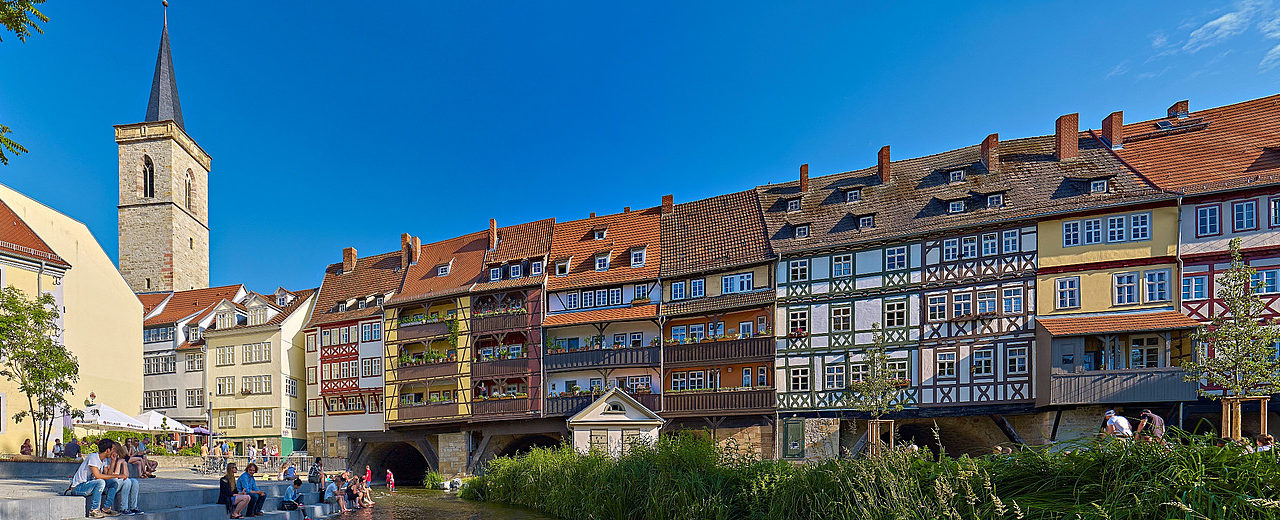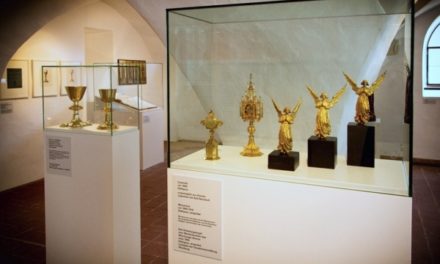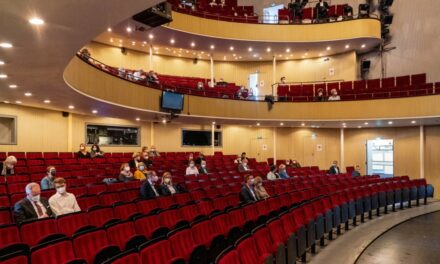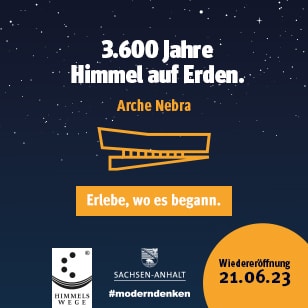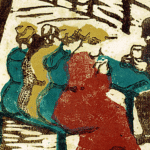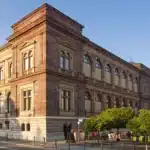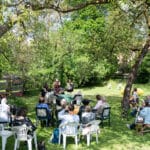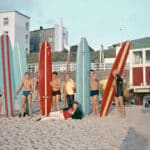The Krämerbrücke, the longest continuously inhabited bridge in Europe.
The bridge was built next to a ford through the Gera and was part of the west-east trade route Via Regia. Originally built as a wooden bridge over the Gera, it was first mentioned in 1117 after being destroyed by one of the many fires. The first documented reference to the bridge as "pons rerum venalium" dates back to 1156. Merchants had already set up stalls on the left and right of the wooden bridge.
Due to repeated fires in 1175, 1178, 1213, 1222, 1245, 1265 and 1293, the Erfurt Council acquired all bridge rights from the monasteries in 1293 in order to build a new stone structure, which was completed in 1325 with uninhabited half-timbered buildings on the bridge. Stone churches with gateways were built at the two bridgeheads, the Benediktikirche at the western end and the Ägidienkirche at the eastern end. St. Aegidien had already existed as a bridge chapel (first mentioned in 1110).
After a town fire in 1472, which destroyed half of the town and the houses on the bridge, the Krämerbrücke was rebuilt in its present form, albeit with 62 half-timbered buildings. In order to make the three-storey, 13 m to 15 m high houses more habitable, the depth of the buildings was increased by adding wooden trusses next to the bridge arches. Since then, the width of the bridge, completed in 1486, has been around 26 m with a clear width of 5.5 m between the house lines. The name Krämerbrücke (Merchants' Bridge) was in common use from 1510 at the latest.
By the 18th century, the number of houses on the bridge had decreased to 38 due to building mergers and new buildings after fire damage; today there are still 32 residential buildings. The Benedictine church was sold in 1807 and demolished in 1810 for the construction of a residential building. The church tower had to make way for the new parallel town hall bridge in 1895, and the town also considered demolishing the entire bridge.
Buildings 12 and 13 were demolished and rebuilt in 1952 due to damage from the Second World War (US artillery bombardment in April 1945). This revealed such extensive damage to the wooden bracing structures, including those of the neighboring buildings 11 and 14, that they had to be replaced. For this purpose, 11.5 m long trunks with a cross-section of 48 cm × 36 cm and 26 cm × 36 cm respectively had to be installed for the bays, the procurement of which was costly and took months in 1952[2].
Due to its special significance for the city and general architectural history, the Krämerbrücke was also given special monument protection in the GDR. From 1967 to 1973, all the houses were restored. Extensive repairs to the vaulted bridge were carried out in 1985/1986 and 2002. Since then, vehicles with a maximum axle load of 11 tons have been allowed to drive on the structure.
Today's Krämerbrücke
Today, the 32 houses mostly house stores for arts and crafts and antiques. With the exception of houses 15, 20, 24 and 33, all the buildings are owned by the city of Erfurt. The building was and is a tourist magnet.
The city of Erfurt maintains a foundation for the preservation of this unique architectural monument, the Krämerbrücke Foundation. A permanent exhibition with a 1:100 scale model of the Krämerbrücke provides information about the history and present of the Krämerbrücke as well as about the foundations that support the building ensemble: Stiftung Krämerbrücke, Deutsche Stiftung Denkmalschutz Bonn and Elisabeth and Fritz Thayssen Stiftung Hamburg.
Erfurt's biggest city festival is named after the bridge - the "Krämerbrückenfest". It takes place around the Krämerbrücke and in the old town on the third weekend in June.
The church and tower are open daily from 11 am to 5 pm.

